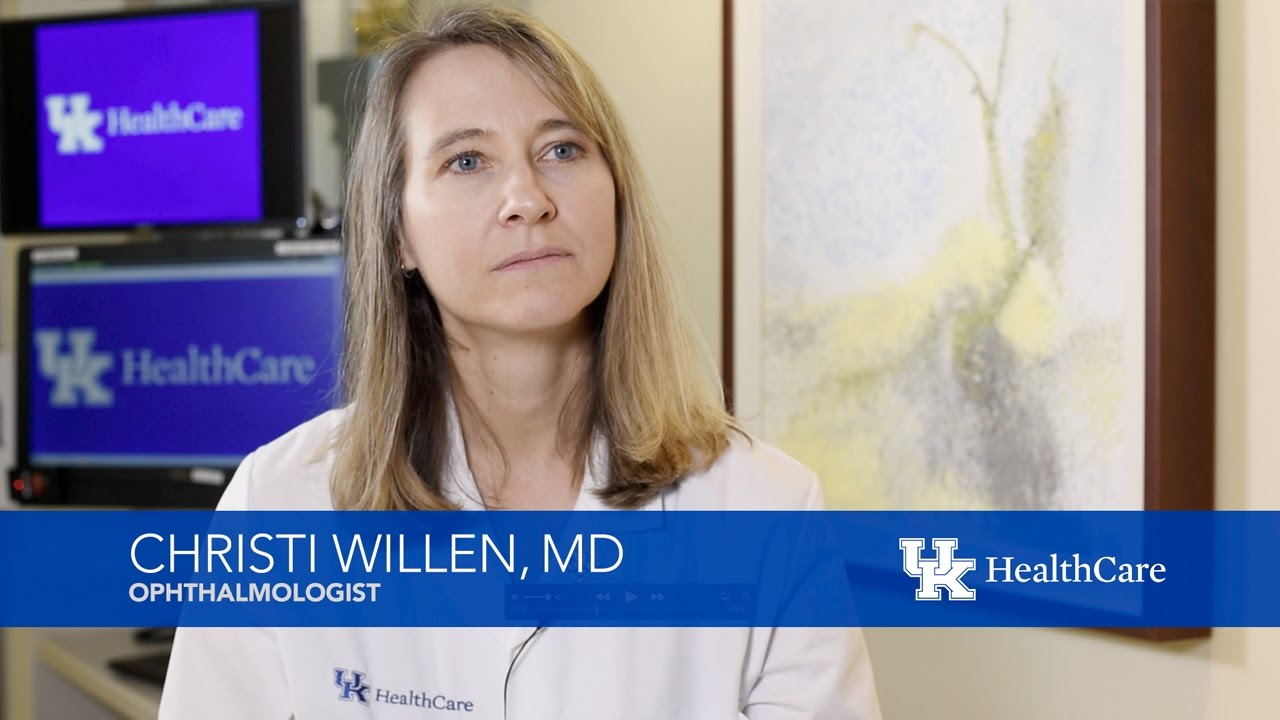Ophthalmology - Pediatric

Early detection and treatment of many sight-threatening diseases may prevent visual loss, which can be caused by misalignment of the eyes, strabismus (crossed eye), refractive error and opacity such as pediatric cataracts or amblyopia (lazy eye). When it comes to children, the most important preventive steps are routine eye examinations, visual screening tests and preventing eye trauma.
Patient appointments
Request an appointment online or call one of the locations listed below.
Referrals
Health care providers, please visit our referral page to refer your patient to this service.
Amblyopia
Amblyopia, or “lazy eye” as it is often called, is decreased vision in one or both eyes due to abnormal development of vision during infancy. The eyes may often appear normal, as the vision loss is due to lack of normal stimulation of the visual pathway from the optic nerve to the brain. Amblyopia can be caused by strabismus, a need for glasses, or a structural problem with the eye that blocks or blurs the vision. Amblyopia is the most common cause of vision loss in children.
It is very important to identify amblyopia at a young age, as eventually the vision loss becomes permanent if it is not treated early in life. Treatment may include glasses, patching, and/or eye drops, and is very successful.
Strabismus
Strabismus refers to any misalignment of the eyes, and is reported to occur in 4% (1 in 25) of people in the U.S. The eyes may turn in (esotropia), or out (exotropia) and may be misaligned vertically. In most children there is no underlying cause identified, though palsies of the cranial nerves can cause some forms of strabismus. In adults, other diseases such as thyroid disease, hypertension, diabetes, strokes, myasthenia gravis and multiple sclerosis may cause eye muscle disorders.
Treatment of strabismus may include eyeglasses, exercises, prism glasses, and/or eye surgery. It is very important to treat any associated loss of vision/amblyopia in children.
Pediatric glaucoma
Glaucoma is damage to the optic nerve, typically caused by pressure that is too high inside the eye. If not treated, glaucoma can lead to irreversible blindness, even in childhood. When this problem is diagnosed prior to age 3 years, it is usually called congenital glaucoma. Symptoms of congenital glaucoma include light sensitivity, aggressive blinking, excessive tearing, eyes that appear cloudy and eyes that appear too large.
Older children may also develop glaucoma, but the signs and symptoms are often less obvious. A complete eye exam is critical to making the diagnosis of glaucoma in any child.
Childhood glaucoma is nearly always a surgical disease, with the goal of lowering pressure in the eye. Fortunately, the outcome can be excellent with vision preserved for a lifetime. We perform the most advanced procedures to save sight in our patients with pediatric glaucoma.
Pediatric cataract
A cataract is a cloudy lens inside the eye and is located just behind the iris (color of the eye). The most common sign is a white or gray pupil. However, some cataracts are difficult to see without a complete eye exam.
Pediatric cataracts can be present at birth or develop later in childhood. They could be present in both eyes or only one eye. They can be inherited if there is a family history of childhood cataracts or can occur spontaneously. Some cataracts are caused by metabolic or genetic disorders and additional testing is required to identify problems elsewhere in the body.
As in adults, cataracts in children can limit vision. More importantly, cataracts in a child can lead to amblyopia, strabismus, and nystagmus (uncontrolled, rapid jerking movements of the eyes). While it is possible for a cataract to be so small that it does not affect vision, many childhood cataracts should be removed in a timely fashion to help prevent permanent vision loss.
Pediatric refractive surgery
Some children who need glasses and/or contact lenses to see well are unable to wear them. The reasons for this may be neurologic, behavioral, or physical. Poor vision can cause a sense of visual isolation, especially in a child that is already developmentally delayed. Sometimes, a refractive surgical procedure may be the best option to allow a child to achieve good vision. LASIK is the most common refractive surgery in adults. A procedure similar to this can be used in some children, but other options are also available when appropriate.
Pediatric oculoplastics
- Congenital ptosis. (Droopy eye).
- Orbital dermoids. (Growth of normal tissue in abnormal place on body).
- Chalazion. (A lump in or along the edge of an eyelid).
Other conditions
- Chalazion
- Coats Disease
- Congenital ocular infections
- Congenital ptosis
- Conjunctivitis
- Corneal dystrophies
- Corneal / limbal dermoid
- Facial / eye trauma in children
- Facial hemangioma
- Fundus coloboma
- Hereditary optic neuropathy
- Inflammatory optic neuropathy
- Leber’s congenital amaurosis
- Nasolacrimal obstruction / anomaly
- Nystagmus
- Optic nerve drusen
- Orbital dermoid
- Papilledema
- Pediatric uveitis
- Peter’s anomaly
- Retinal dystrophies
- Retinitis pigmentosa
- Retinopathy of prematurity







